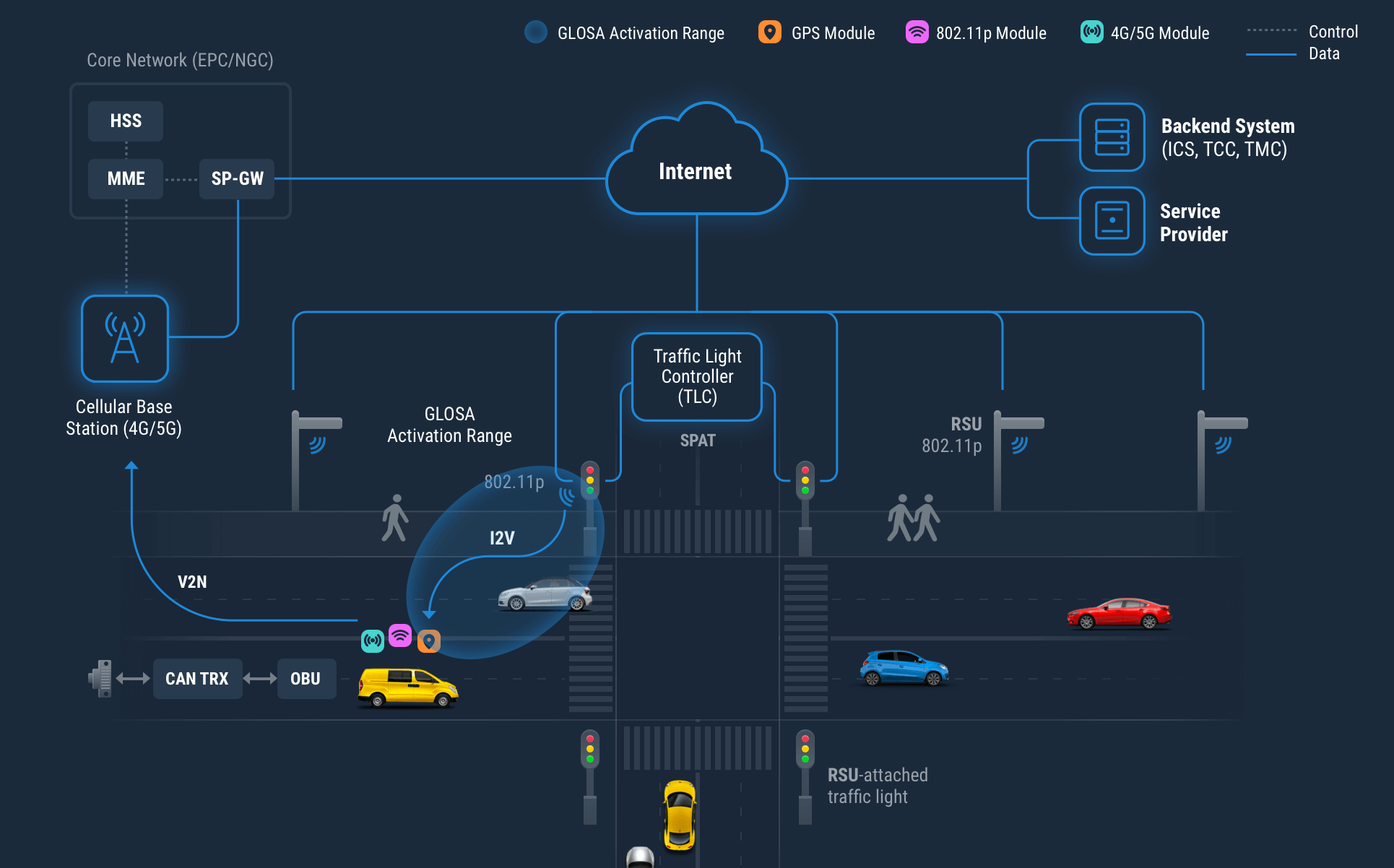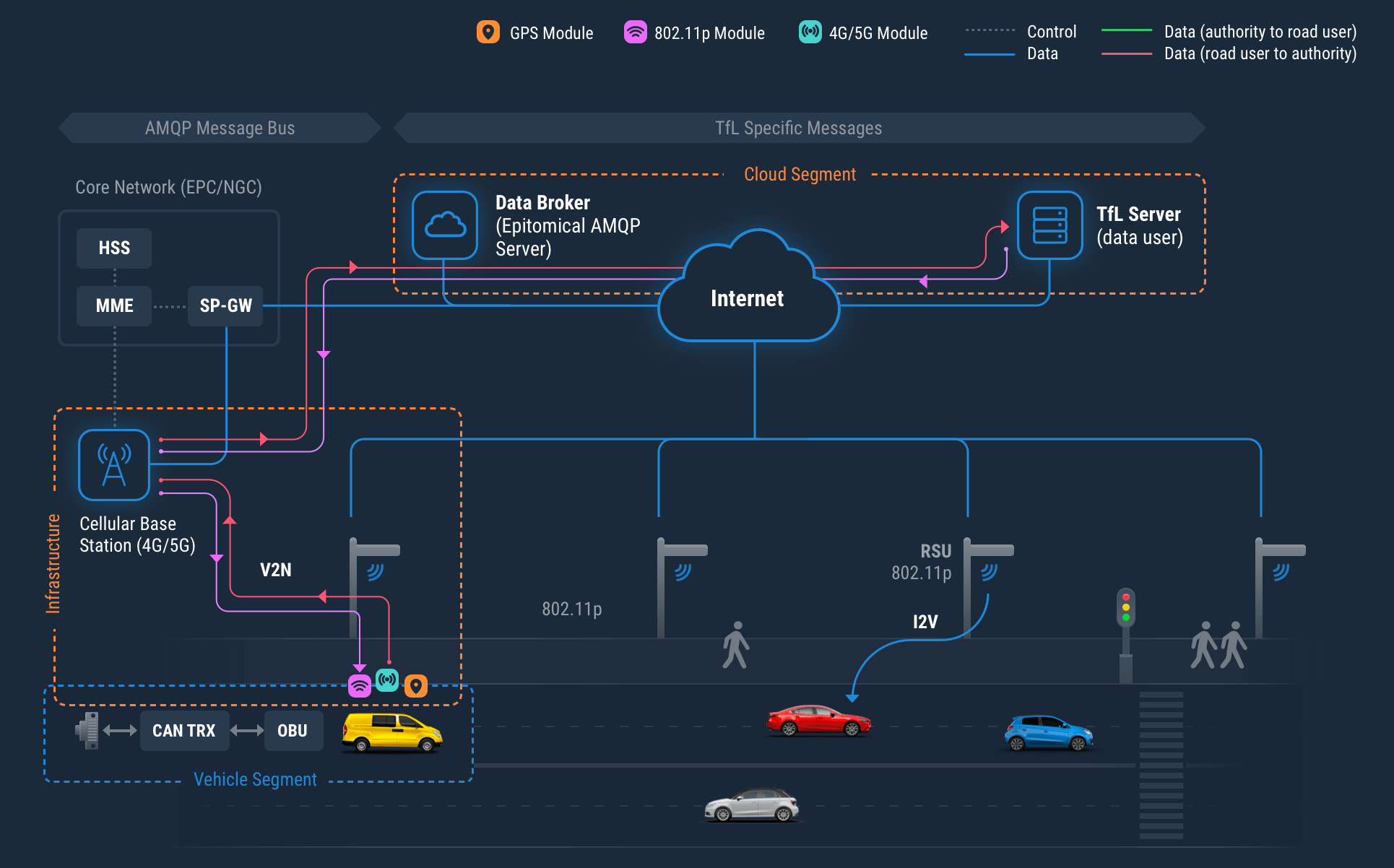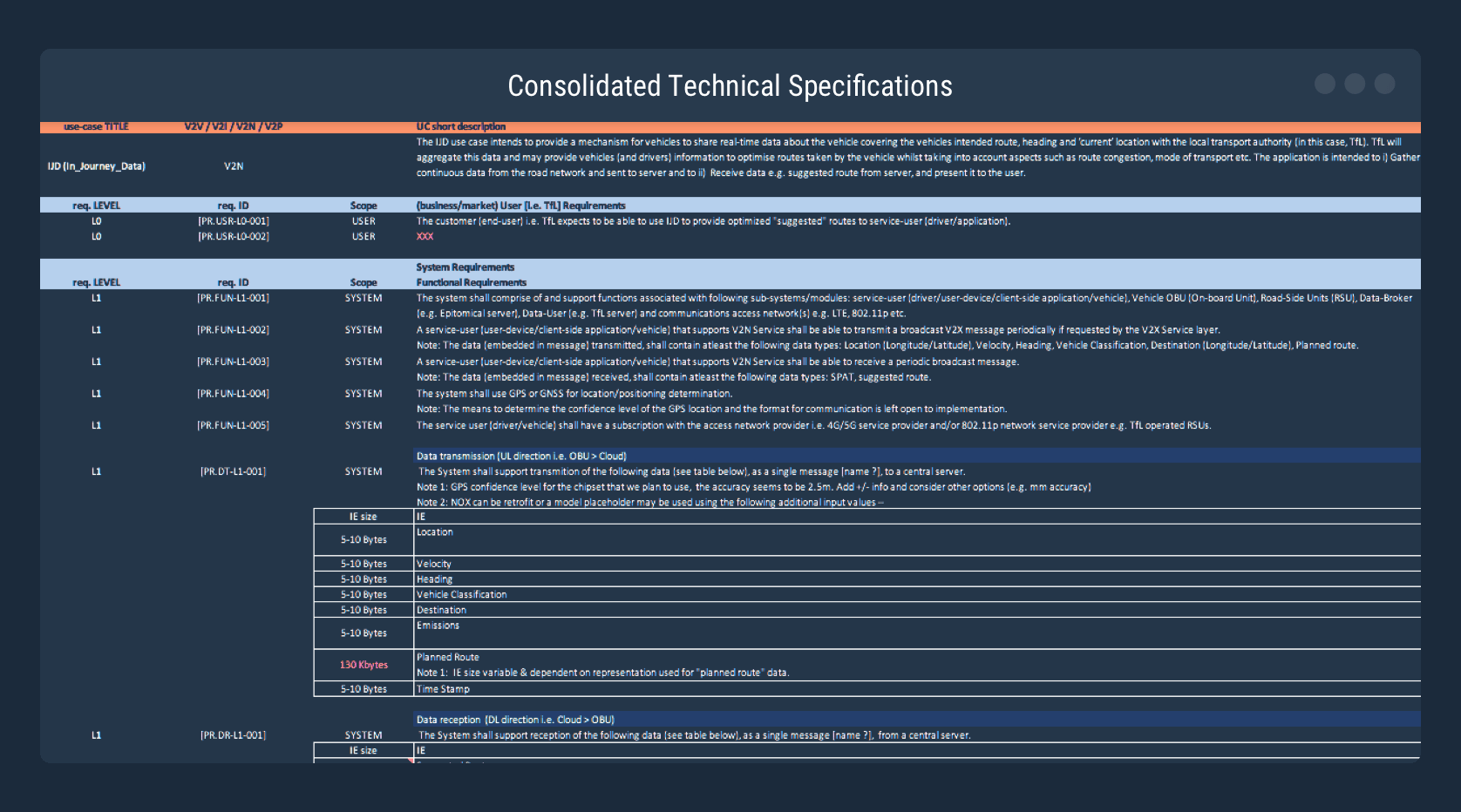Technology Architecture Specification
The goal of the work package is to identify and develop market-centric use cases in line with the project's technical objectives. The use cases are then translated into technology requirements identifying both existing systems and processes as well as those that require further development in order to be ready for customer trials and subsequent customer adoption.
Use cases are developed jointly with a Leding city transport operator, Transport for London (TfL) as well as a global provider of infrastructure engineering services, namely Jacobs Engineering Group
The work package comprises of a number of distinct activities leading to the target output of identification of priority use cases followed by further detailed development.
Existing use cases developed by various industry bodies including the 3GPP (3G Partnership Project and the 5GAA (5G Automotive Association) were reviewed by the work package team as well as by other members of the consortium. This was to allow the team to build a common understanding of work already addressed such as in the areas of vehicle communications falling under the categories of V2X Communications. These included V2V (Vehicle to Vehicle), V2I (Vehicle to Infrastructure, V2P (Vehicle to Pedestrian) and V2N (Vehicle to Network) communications.
The team conducted a number of workshops both internally within individual partner organisations as well as jointly as a consortium. Over forty individual use cases were identified after which the primary use case development partners, Transport for London and Jacobs prioritised use cases for further development. The main factors in identifying priority cases for development were based on their extendability to other use cases as well as ones that near-term market opportunities.

Project Consortium Use-Case Workshop Summary
Jacobs identified four use cases that were seen as having potential for future marketability and of interest to clients.

RWW and GLOSA were developed further to understand the features of the use case and to provide detailed use case descriptions, working closely with the University of Surrey and Cranfield University. Both RWW and GLOSA are listed as "Day 1" services by Amsterdam Group.
RWW informs drivers of road works, the corresponding parameters and associated obstruction (e.g. lane closed) on the route ahead. The purpose is to alert the driver in time to increase awareness and to inform of potentially dangerous conditions

Road Works Warning Use-Case Architecture
Green Light Optimized Speed Advisory (GLOSA) systems have been shown to be able to reduce both CO2 emissions and fuel consumption by giving drivers speed recommendations when approaching a traffic light. GLOSA informs vehicles approaching a traffic light of what speed to drive, to ensure its approach is timed with a green light thus reducing congestion.For the system to reach its maximum potential, is is necessary to properly predict all different types of traffic lights where signals may change with lead times as short as one second.

GLOSA Use-Case Architecture
This use case has been developed following a number of workshops with Transport for London (TfL) and Project Alloyed team members to capture a range of data requirements that would be of benefit to TfL as a transport authority.
The move to connected vehicles opens up the possibility for continuous data to be leveraged to derive a true reflection of the road network and enhance TfL's capability to manage the network more efficiently.
This use case, namely In-Journey Data (IJD) focuses on the journey of an individual road user, not constrained by their mode of travel. It is split into a number of phases providing an increased level of journey information to the user.

In-Journey Data Use-Case Architecture
Each of the three use cases described (i.e. RWW, GLOSA & IJD) have been documented in detail. Together with details of use cases available from industry bodies as well as outputs from other project work packages, the project engineering teams have created a low level specification of the requirements of the system as a whole as well as for each use case.
This is pursued further allowing the technical team to dive deeper into both individual device hardware plus software requirements, services flows and systems interfaces for key components that make up the technology architecture for each use case.

Consolidated Technical Specifications Snapshot
Further development of the outputs from this work package are delivered through work package 5 where all the individual use case technology architectures are consolidated as well as work package 6 where the engineering teams have developed hardware and software systems allowing the demonstration of use-case capabilities.
Led By

Partners



Led By

Partners


